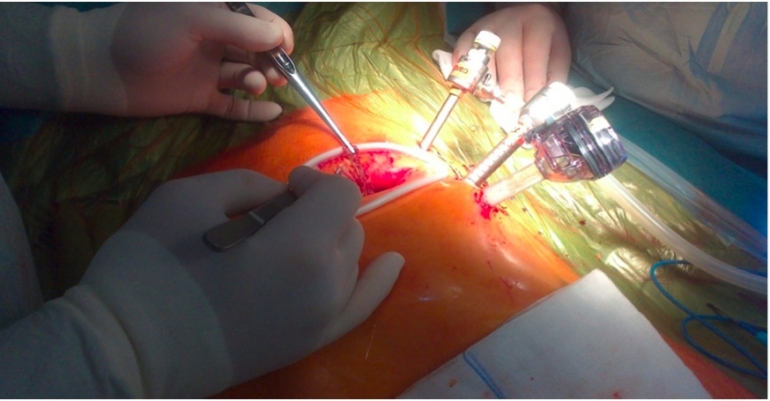General information on bypass surgery
Atherosclerosis of the coronary arteries is the most common heart condition. CABG is one of the main treatment options for this condition. This procedure requires a median sternotomy and requires several months of recovery. It is therefore advisable to avoid the 25-to-30-cm incision if possible. An endo-ACAB is one of the alternatives. Endo is short for endoscopic. ACAB stands for Atraumatic Coronary Artery Bypass.
Who is a candidate for an endo-ACAB?
All patients with a lesion on the anterior (most important) coronary artery are candidates for this procedure. Patients with several stenoses in multiple coronary arteries may be candidates for a hybrid procedure or endo-CABG.
Endo-ACAB methodology
Endo-ACAB is a minimally invasive approach to a coronary artery bypass and avoids a median sternotomy with thoracoscopic techniques. The internal mammary artery is thoracoscopically opened with 3 small 5-mm holes. A 4-to-5-cm incision is then made between the ribs without any mechanical spreading of the ribs. The bypass is performed between the LAD and the internal mammary artery. This procedure is performed without the need to stop the heart or use a heart-lung machine (off-pump surgery).

Results
From March 2013 to March 2015, 140 endo-ACAB procedures were performed at Jessa Ziekenhuis.
- Average age 65.5 (41y – 85y)
- 17.5% octogenarians (80+)
- 135 procedures were performed successfully (97%)
- Extremely high level of epicardial fat (n=1)
- Severe LIMA spasm (n=1)
- Extremely high level of intrathoracic fat (morbidly obese BMI>50) (n=1)
- Intramural course of LAD (n=2)
- The other 5 patients were treated with percutaneous coronary intervention (PCI)
- No urgent conversion to sternotomy
- Alternative to robot-assisted coronary bypass surgery
- Faster
- Reproducible
- Cost-efficient
Benefits of this procedure
Endo-ACAB is an alternative treatment of coronary atherosclerosis in a specific group of patients (left anterior descending artery disease)
- Safe and efficient
- Same or shorter surgery duration
- Minimal surgical trauma, so:
- Less pain
- Smaller scar
- Less blood loss
- Shorter hospital stay
- Faster recovery
- Faster return to work
- Nice cosmetic result
